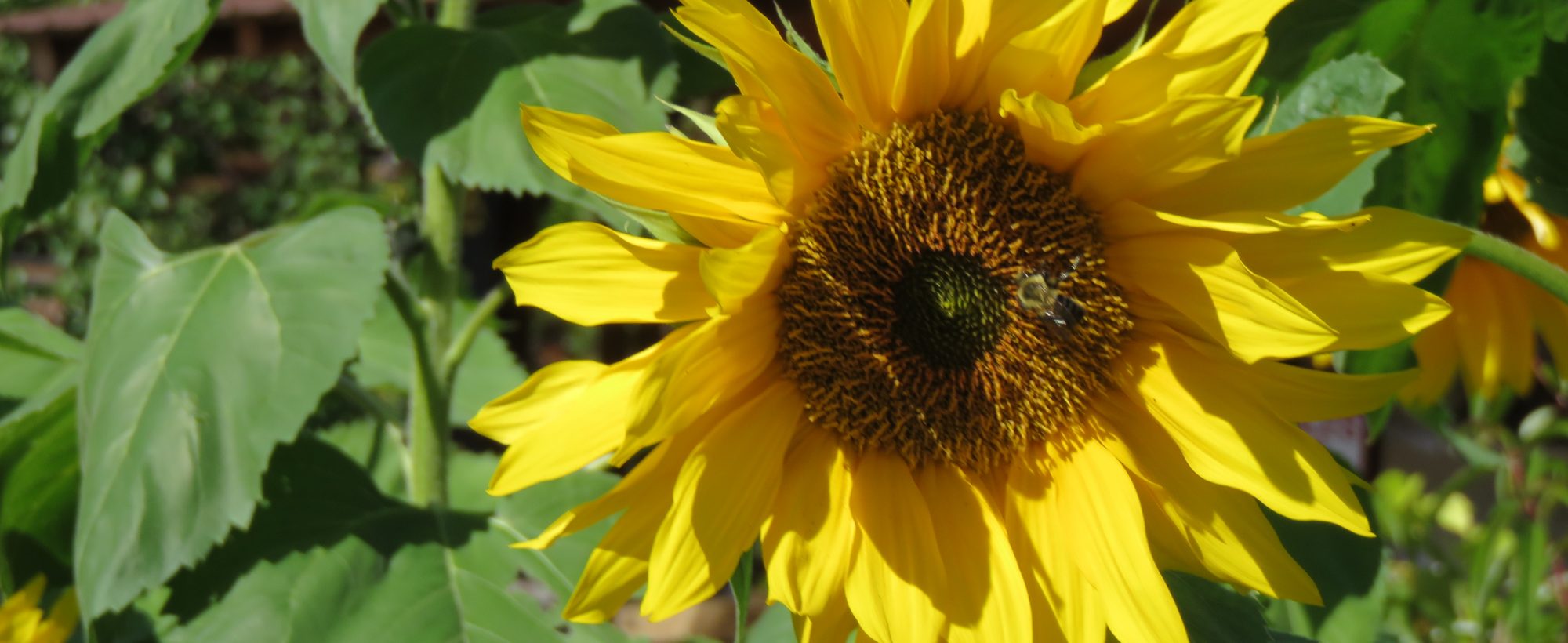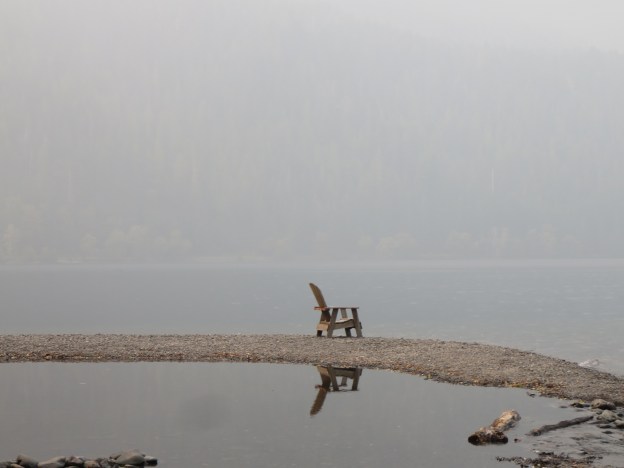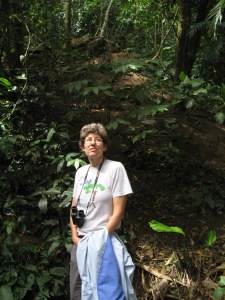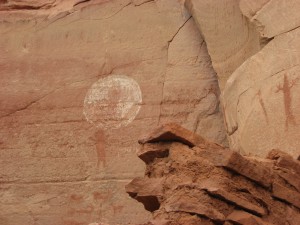It’s three days since Aretha Franklin died and I’ve got her CD playing in my Forester. I drive from the mini-peninsula of Port Townsend across the tip of the broader Olympic Peninsula, singing to the firs and hemlocks, “You make me feel like a natural woman…” Oh, yeah, tree friends, wrap me in moss and slap me with river spray! Get me back to nature, baby. I turn onto Hurricane Ridge Road to go to the famed lookout point at the road’s end. This is both stupid and obstinate because there’s no view to be had. But I want to get outside and it’s on the way to, well, outside.
We moved recently and I’ve been inside unpacking boxes or out foraging thrift stores and garage sales. Although it’s gratifying to create a new home, I need a change. Western Washington is up in smoke from wildfires in Canada and elsewhere and we’re advised to stay inside and certainly not exert ourselves in the polluted air. My plan was to go on a leisurely beach walk with friends, but that isn’t enough for me. I want out and I want to go alone.
I get like this sometimes, when I’m hankering to wander and I’m not sure why. After the fact, I usually realize I was starved for a chance to catch up with Mother Nature and with myself. For me, that is best done in solitude (or with someone I know so well I can have lots of quiet time). So I don’t mind if I can’t see all the way to Mount Olympus, the highest (at 7,980 feet) of the Olympic Mountains. I’ll wave to Hera and Zeus through the haze.
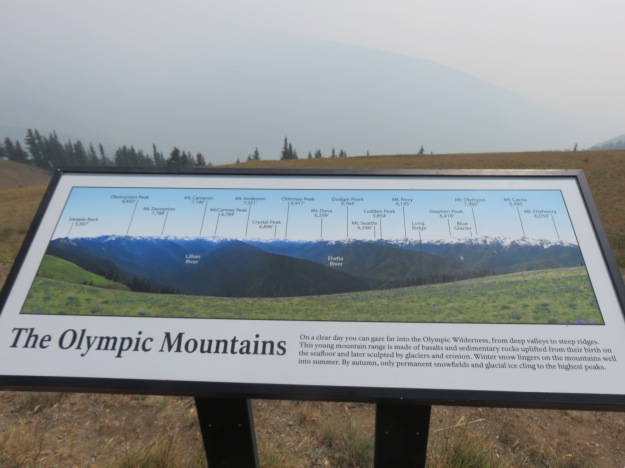
Later I find a room for the night at Lake Crescent Lodge. I get some cauliflower curry soup and watch the sun set pink over the shrouded, ghostly hills. I feel lucky to be in this historic and, momentarily, peaceful national park.
Yet the sad truth is that the park, which sound tracker Gordon Hempton (whose book I described in a past post) identified as the quietest place he could find in America, is in trouble. The rain forests of the Olympic Peninsula are under acoustic assault and may not remain quiet for long. I’ve written our government representatives to try to keep it that way, without military jets shrieking overhead for training missions from Whidbey. There is more to be done.
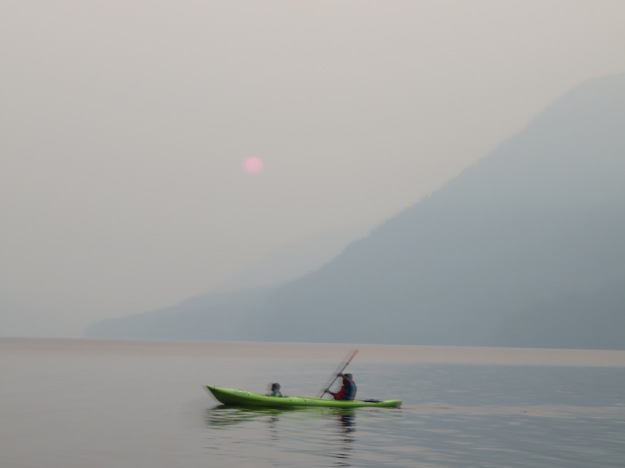
Night dreams are an escalator down to my nether world and I head back to the woods as soon as I wake up. I am getting to that place of inner quiet.
My morning walk leads me to a mossy log where I sit for a while by the rapids of Barnes Creek. I seem to have the sacred space all to myself until I am joined by a companion in contemplation: a curious Douglas Squirrel joins me from the pew of her tree.
When I continue on, I am happy to also make some human friends on the way to Marymede Falls.
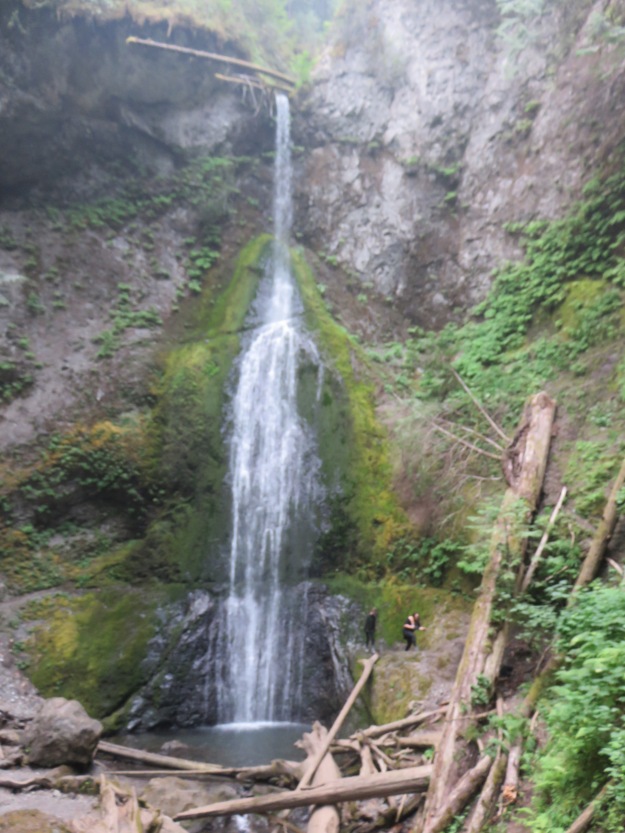
Then, inner haze somewhat cleared, it is time to go home. As the song goes, “I used to feel so uninspired… Now I’m no longer doubtful of what I’m living for.” Sometimes you gotta go out to go in, and get nourished by nature. And sometimes we have to speak up to keep the peace.
“Nearly all the park is a profound solitude. Yet it is full of charming company …with sermons in stones, storms, trees, flowers, and animals brimful of humanity.” John Muir (1838-1914)
Follow Sound Defense Alliance on Facebook and see their website for information about protecting the Puget Sound area from noise and other pollution.
